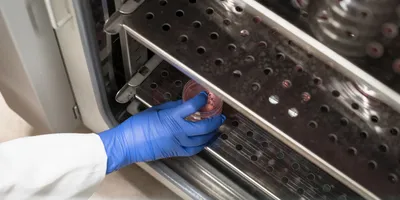The COVID-19 pandemic has significantly impacted global supply chains, affecting the availability of food items, electronics, household goods and furniture, and many other products. Laboratories are also experiencing some of these effects, as high demand for certain life science instruments and equipment has led to shortages and delays. With many manufacturers experiencing backorders, pre-owned instruments are an excellent alternative for laboratories that have an immediate need.
“During the height of the pandemic, we were experiencing unprecedented demand for real-time PCR units,” says Jayson Bernstein, president of American Laboratory Trading. “After that initial frenzy passed, and as the Pfizer vaccine was coming to market in the fall, the demand for ultra-low temperature freezers took center stage.”
Reid Hjalmarson, vice president of operations at BioSurplus, notes a similar increase in demand for cold storage, as well as high-throughput purification systems, plate-based robotics, and liquid handling platforms.
In addition to being readily available, a major advantage of pre-owned equipment is cost. Hjalmarson notes that laboratories of any size may benefit from purchasing used equipment, and those with comparatively tighter budgets (start-ups, midsize companies, and academic labs, for example) get the most benefit.
Both experts emphasize the importance of working with a reputable vendor to ensure high quality, reliable instruments. “There needs to be a balance between competitive pricing and instrument reliability,” explains Bernstein.
Instrument-specific considerations
There are different considerations and purchasing questions for each type of life science instrument. Jim Hower, a director at BioSurplus, provides some guidance for buyers. For DNA/RNA analysis instruments, including sequencers, synthesizers, and thermal cyclers, “the first step is determining if the equipment has the plate format needed for the customer’s application,” says Hower. Most of these instruments also require software for data analysis, so buyers should look for a system with software included.
For electrophoresis systems, Hower recommends looking for a system that is as complete as possible. Ideally, casting trays, electrodes, and combs should all be purchased together, and the power supply can be purchased separately. For imaging systems, “it is imperative that they include the software needed to operate them and capture/analyze the images,” he says.
Lab Quality Management Certificate
The Lab Quality Management certificate is more than training—it’s a professional advantage.
Gain critical skills and IACET-approved CEUs that make a measurable difference.
For buyers seeking pre-owned flow cytometers, Hower recommends customers determine beforehand which lasers/colors they need for their application, as many systems are configured differently. It is also important to determine whether the intended applications require cell sorting, as not all flow cytometers have this capability.
Important purchasing questions for all types of instruments
“Regardless of the instrument, there are a couple of key factors that a lab manager, scientist, or procurement specialist should consider, and they shouldn’t be afraid to ask key questions,” says Bernstein.
There are many pre-owned instrument vendors, and each has specific processes for testing, repairing/refurbishing, and validating inventory. Buyers should review these processes, as well as service policies and warranty options prior to purchase.
Bernstein recommends asking to speak with the person who inspected and serviced the instrument, asking whether the instrument performs to manufacturer’s specifications and whether test results are available. He also recommends confirming that consumable items such as lamps or tubing have been replaced as needed.
Bernstein offers one final piece of advice for those considering pre-owned equipment: “Treat your refurbished equipment purchases like you’re spending your own money and you’ll be much more satisfied with the instrument you receive.”











